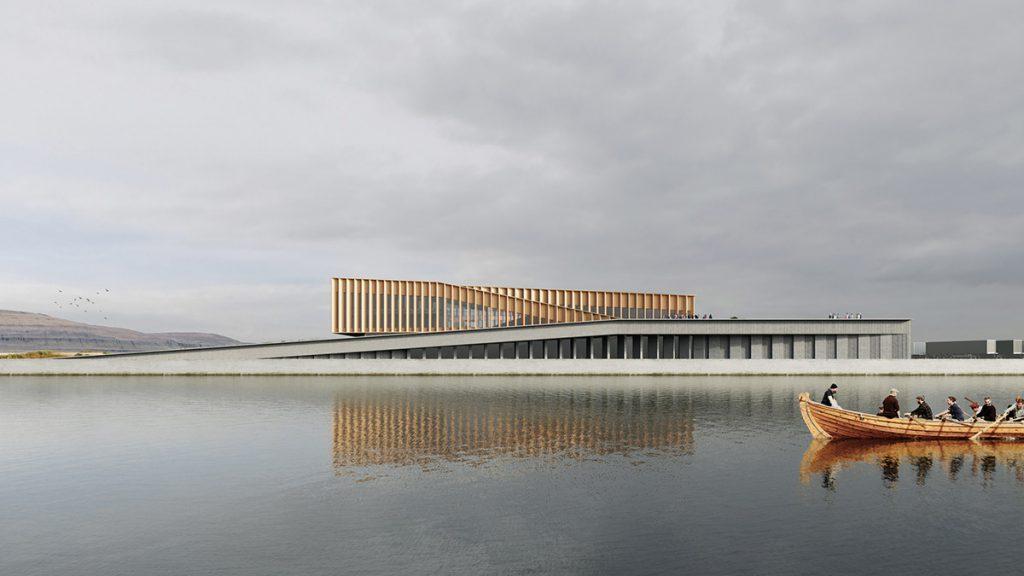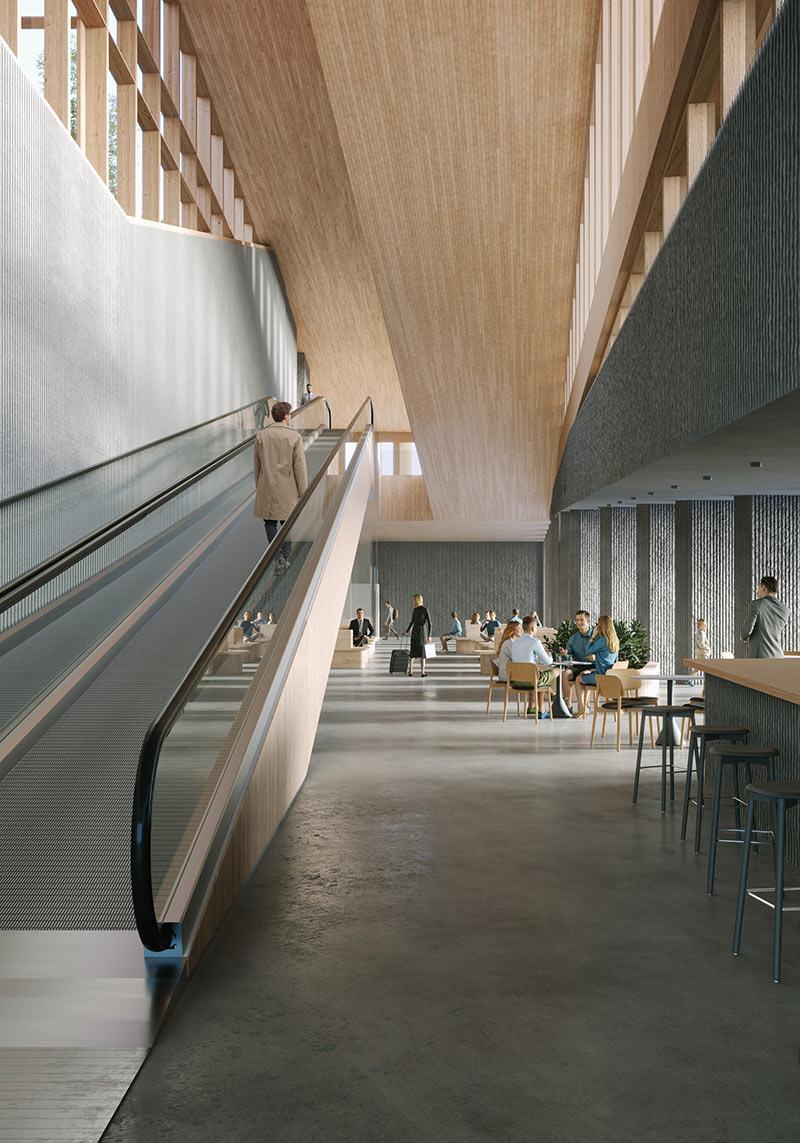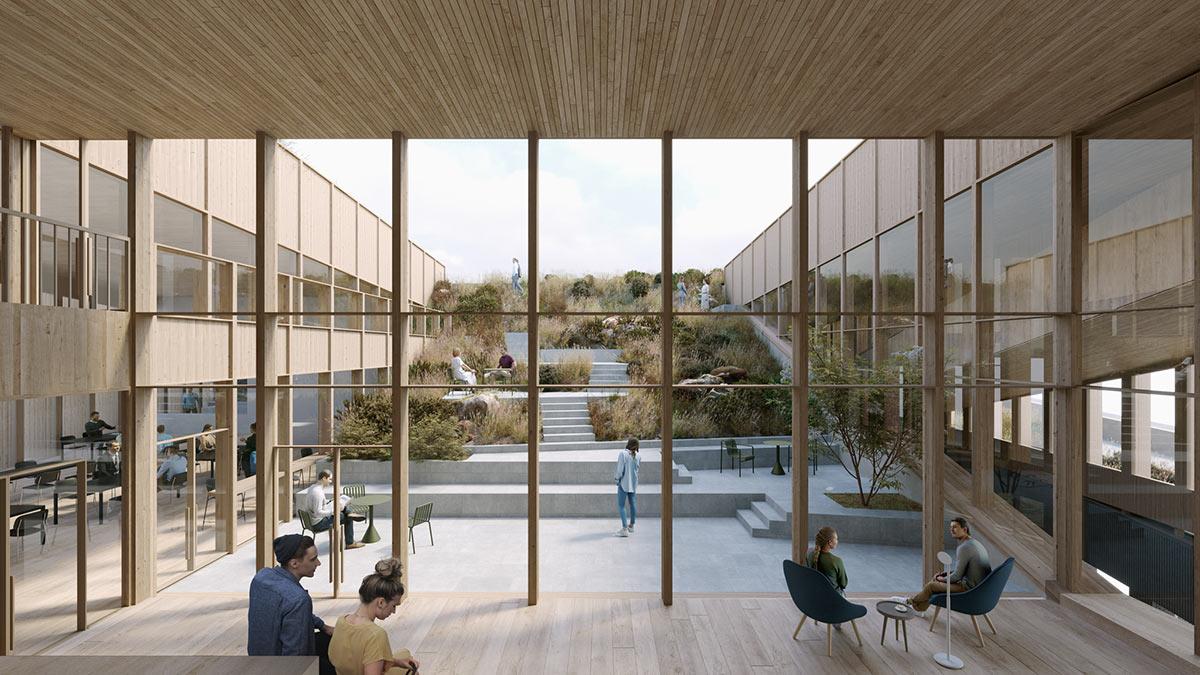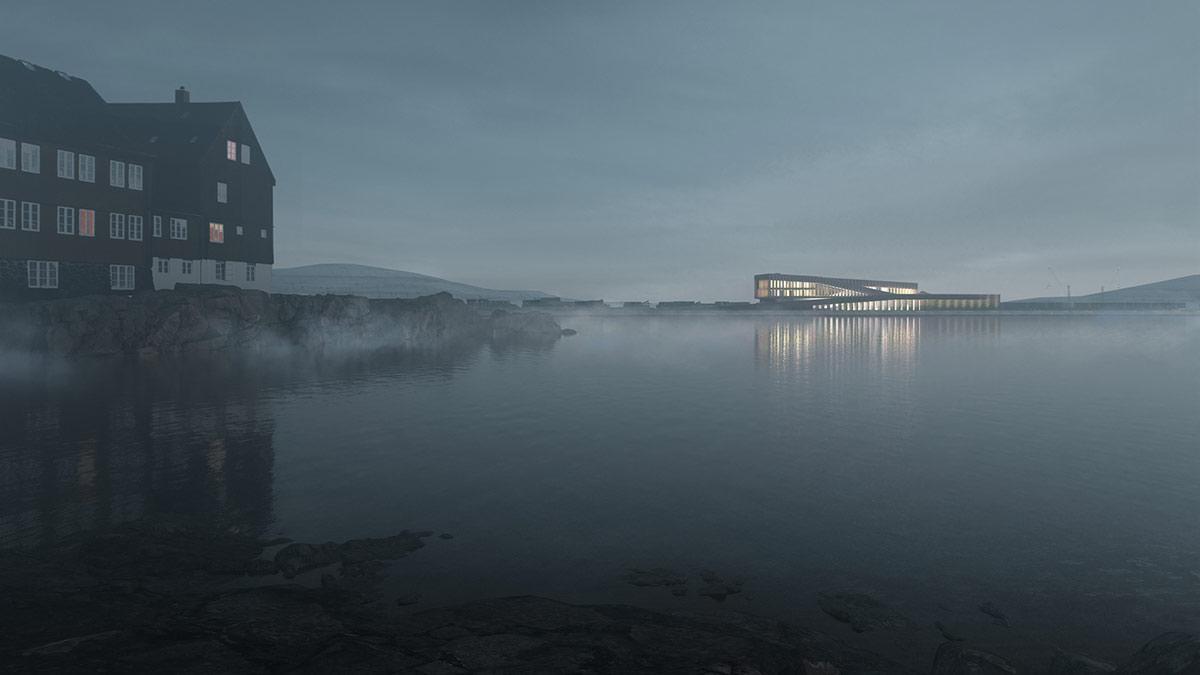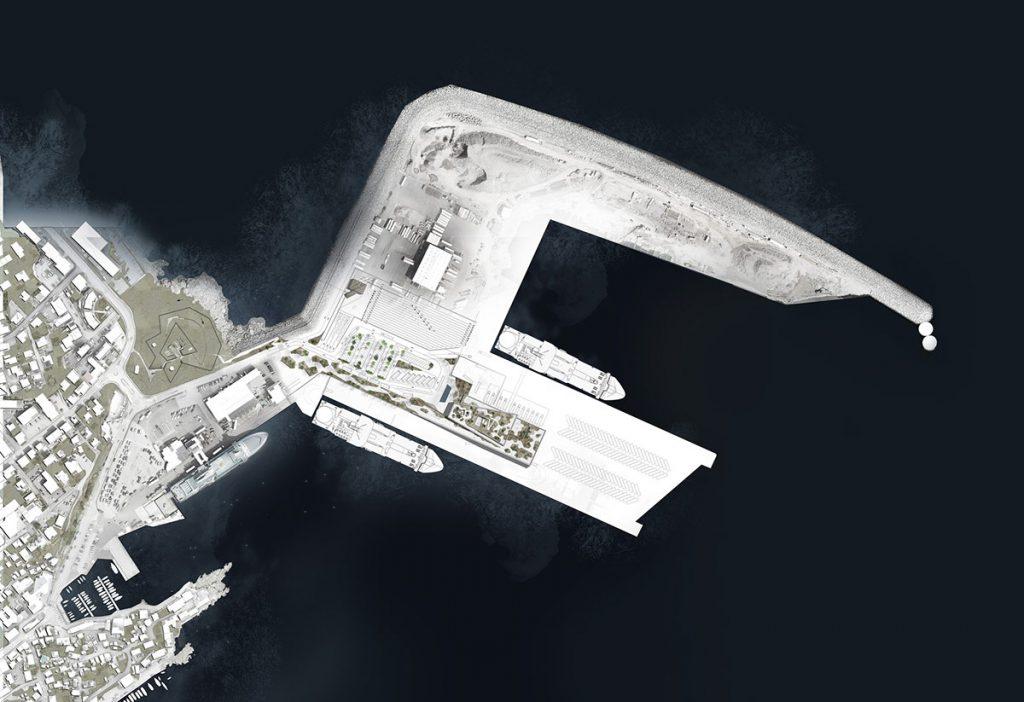Reclaiming a harbour
The new Torshavn ferry terminal is set to give the Faroe Islands a new architectural landmark with a hybrid timber-concrete design. With architects Henning Larsen on board, it also re-opens the harbour to the islanders.
It is presumably no coincidence that Danish architectural firm Henning Larsen has an office – albeit a very small one – in Torshavn, capital of the Faroe Islands. After all, the company is responsible for the two largest timber construction sites that will soon allow this city in the Far North to enjoy a spectacular ferry terminal and a new university campus. Shipping company Smyril Line, which operates ferry services to the Danish mainland and to Iceland, will benefit from its own prestigious headquarters complete with logistics centre and passenger terminal. This new construction will be an iconic landmark on the island’s shores, welcoming travellers as they arrive.
Inspired by fishing boats
The design for this striking concrete/wood structure was inspired by traditional Faroese fishing boats, which were inscribed on the UNESCO Representative List of the Intangible Cultural Heritage of Humanity in 2021. These boats can be traced back to the Viking era and were traditionally made just with an axe. Their elegant curves are reflected in the shape of the timber construction for the ferry terminal. While the concrete base underneath adopts the flow of this shape and continues it on a different scale.
The integration of wood, with its elegant lines, draws inspiration from the distinct charm of traditional Faroese boats and the historic Eastern harbour.
Ósbjørn Jacobsen, Design Director Faroe Islands, Henning Larsen
On the facade, the wooden battens act like a brise soleil and their vertical hatching counterbalances the markedly horizontal shape. “Our design is a testament to the captivating beauty and maritime legacy of the Faroe Islands. The integration of wood, with its elegant lines, draws inspiration from the distinct charm of traditional Faroese boats and the historic Eastern harbour,” explains Ósbjørn Jacobsen, design director of Henning Larsen’s office on the Faroe Islands.
Access to harbour promenade restored
The island’s residents have a very special relationship to the historic Eastern harbour mentioned by Jacobsen. This used to be where all who travelled from the island started and finished their journey. Photographs from the 1950s show clusters of people standing on the quay, waving to the ships as they departed. However, since the Schengen Agreement came into force, the harbour front has been closed to the general public due to the necessary logistics.
The new ferry terminal designed by Henning Larsen will restore this public space and enable the historic harbour promenade to be reconnected to the city. And so, the long-lost harbour will finally be given back to the Faroese people. The important element of the design here was to separate passenger and freight transport on-site. “We are proud to embark on the journey to creating this transformative space that celebrates and reconnects the community with their cherished heritage,” says Jacobsen.
Panoramic views for all
Inside the building, visitors find the check-in and passenger services, a waiting area and café. On the upper floor of this two-storey structure, the waiting area opens onto an inner courtyard with a landscape of greenery. Steps and paved seating lead up to the rooftop terrace, which is accessible by the general public and offers all visitors panoramic views across the open sea.
The Smyril Line is situated on the ground floor, with offices for over 100 employees including a central common area. This social hub is designed to promote collaboration and interaction. A spacious, private internal garden is at the heart of the Smyril Line headquarters and its design fits seamlessly into the surrounding landscape.
Architecture studio Henning Larsen has designed numerous timber construction projects in the Far North, including Ørestad Church – the first new church to be built in Copenhagen for 30 years, as well as Stockholm Wood City, the world’s largest wooden city.
Text: Gertraud Gerst
Translation: Rosemary Bridger-Lippe
Visualizations: Element, Henning Larsen
